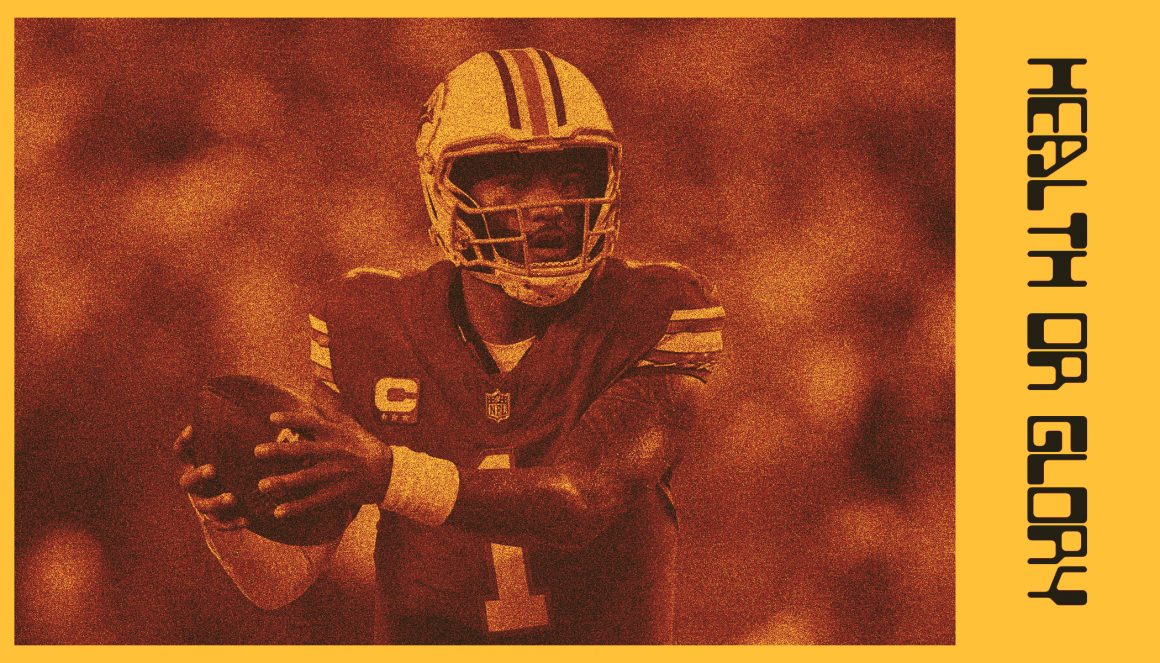
Tua Tagovailoa facing calls to retire: When does health become a priority over glory?
By Maggie Hsu, November 5 2024—
Every football player dreams of one thing: winning the Super Bowl. However, over the years, we’ve seen that the NFL’s relentless pursuit of glory has come with a price. For Miami Dolphins quarterback Tua Tagovailoa, the cost might be too high. After sustaining his third career concussion, Tagovailoa faces mounting calls to retire, a situation that’s forcing the league — and its fans — to confront a harsh reality: when does the pursuit of a Super Bowl ring become too dangerous? As advances in neuroscience shed more light on the irreversible damage caused by traumatic brain injuries (TBIs), cases like Tagovailoa are just one of many that continue this debate of when the pursuit of success becomes too dangerous.
The injury
Tagovailoa’s career in the NFL is relatively young. The former University of Alabama star was drafted fifth overall by the Dolphins in the 2020 NFL Draft. Projected to be the first overall pick of that year’s draft, Tagovailoa was revered to be the saviour to all of the franchises that were struggling to put together wins. The amazing potential that he carried into the league has been halted by devastating injuries over his short tenure in the league. His most recent concussion at the start of the 2024–25 season has reignited the debate over player safety in a sport where toughness is equated to enduring trials and tribulations on the body, but this toughness is needed to win. The calls for Tagovailoa to step away from the game come not only from concerned fans and the media, but these echoes to prioritize his health are heard from his NFL peers and medical professionals who understand the long-term implications of repeated hits to the head.
Traumatic brain injury
To understand these long-term implications, we must first understand the terms at play here. John Hopkins Medicine defines a traumatic brain injury (TBI) as “a sudden, external, physical assault” on the brain. TBI is used as an umbrella term that encapsulates an array of injuries that can happen to the brain. A concussion, in a similar vein, is referred to as a mild TBI and is caused by “a bump, blow, or jolt to the head or by a hit to the body that causes the head and brain to move rapidly back and forth” — essentially something jostling your brain around in your skull. Lastly, chronic traumatic encephalopathy (CTE) is the condition that results from multiple traumatic brain injuries and/or concussions which can lead to dementia and eventually death.
Having established these terms, one can now understand why it’s concerning for Tagovailoa to consider returning to play a sport that requires players to withstand hits to their bodies and thus, their heads and brains. While the NFL has made strides in recent years to address brain injuries with protocols and rules that are designed to protect players, the culture of football and sports as a whole has often undermined these efforts as there is an unspoken expectation to play through the pain as this perseverance and resilience is understood as strength or “a winning mentality”.
Athletes and brain injury
The debate isn’t unique to football. Similar concerns have risen in other contact sports like hockey. The NHL, for example, has faced growing scrutiny over its permissiveness towards fighting and hitting in the game that poses risks of head injuries to players. Notably when their star player Sidney Crosby was benched for long stretches due to a concussion and more tragically, after the death of Derek Boogaard. For Boogaard, the consequences were much greater and the evidence was imprinted into his brain. After the New York Rangers enforcer passed in 2011 from an accidental overdose, his family donated his brain to Boston University. The autopsy revealed Boogaard’s advanced case of CTE which was likely the true cause of his death. This revelation amplified calls for reform in the NHL in handling physical violence and head injuries.
While Crosby, luckily, eventually returned to play and continues to build his legacy as one of the best hockey players of all time, his absences spotlighted the dangers of returning to play too quickly after brain injuries, drawing questions about how his career might have been different if stricter protocols and policies had been in place to protect him and other players. The NHL responded by modifying its concussion evaluation and management protocol in 2022. This protocol provided a more rigid structure for teams to follow in educating, evaluating, recognizing and managing concussions moving forward, including sanctions that will be imposed on clubs who do not comply.
Tua Tagovailoa’s situation is important as it carries broader implications based on how the NFL chooses to approach it — when and if a league can step in and prevent their players from causing themselves further harm? Can any changes be made to reduce harm when the sport itself causes inherent trauma to the brain? As more data on TBIs and other neurodegenerative diseases becomes available, leagues like the NFL, NHL and other contact sports worldwide will need to continually reevaluate their protocols to make player safety a priority.
What’s next?
In a world where athletic success is measured by championships, the allure of a Super Bowl ring for players in the NFL is undeniable but so is the reality of life-altering consequences from repeated head trauma. Perhaps it’s also time to look at how the media glorifies athletes as heroes who play through the pain. With growing evidence of the irreversible damage caused by concussions with Derek Boogaard as one of the greatest tragedies lost to CTE, the pursuit of glory should no longer be defined by the number of rings on a player’s hand, but by the wisdom to walk away from a game they love with their health intact.
